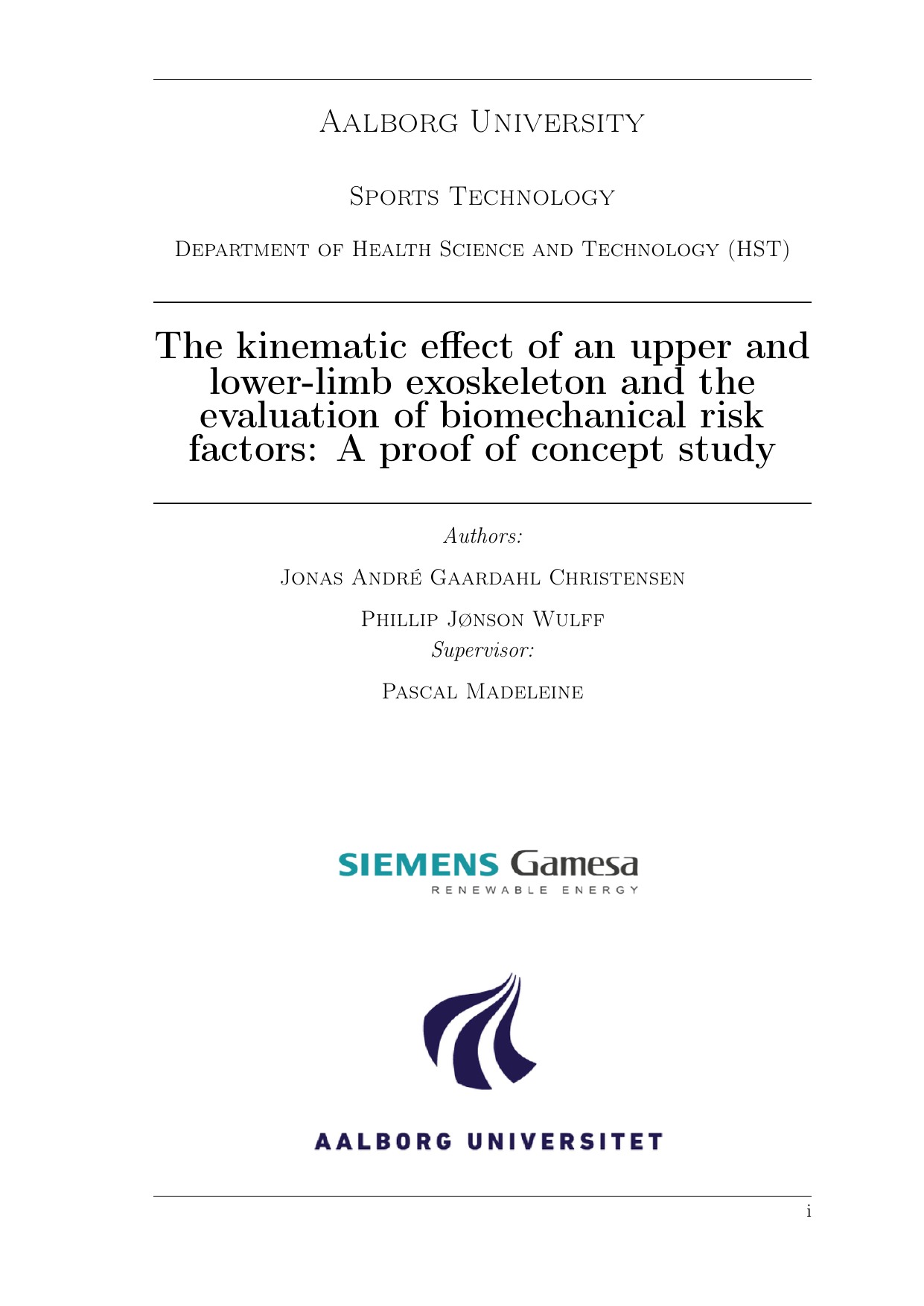
The kinematic effect of an upper and lower-limb exoskeleton and the evaluation of biomechanical risk factors: A proof of concept study
Term
4. semester
Education
Publication year
2020
Submitted on
2020-06-02
Pages
96
Abstract
Purpose:Musculoskeletal disorders(MSD) is the mostcommon work-related health problem in Europe (De Koket al. 2019). The passive occupational exoskeletons, isbeneficial to reduce the occurrence of MSD. We aimed toassess an upper and lower-limb exoskeletons kinematic effecton two dynamic work tasks performed at a production siteat Siemens Gamesa Renewable Energy A/S.Method:The kinematic data was acquired from previousprojects at Siemens Gamesa. We developed and performedan automated RULA assessment, with the purpose toevaluate potential risk factors. We also developed a testbattery to standardize a catalog of work tasks, in which theindustrial working facilities could compare their work tasksto, and ease the implementation of exoskeletons.Results:The study found no significant kinematicdifferences when using the BackX exoskeleton, but severaltendencies showed changes in the full-body kinematics.Several significant kinematic differences and even moretendencies were found for the ShoulderX exoskeleton.Conclusion:In general, the study found that the jointsinteract with each other and transfer load regarding themovements performed when wearing the exoskeletons. Froma biomechanical point of view, the changes of wearing anexoskeleton could impose a potential risk for work-relateddisorders for both the back and shoulder.
Keywords
Passive ; exoskeleton ; Kinematics ; Biomechanics ; indutry ; test battery ; dynamic
Documents
